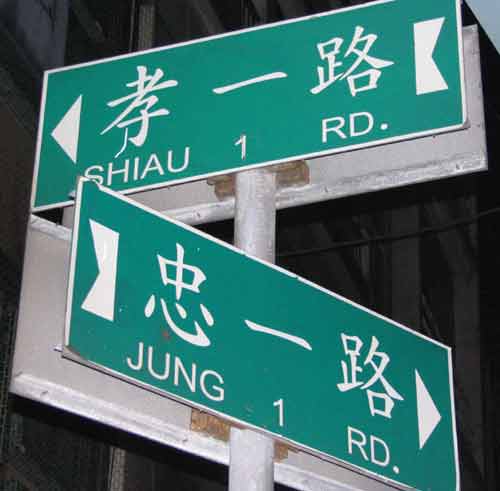Here’s an example of the mixing of romanization systems and addition of errors that used to be common in Taipei before the city switched to Hanyu Pinyin. These signs are on a corner in Banqiao, Taipei County, not far from Banqiao City Hall.
First, let’s set the scene. We have two types of signs, both with a mix of romanization and English. One set of signs gives street names; the other points toward places of possible interest.
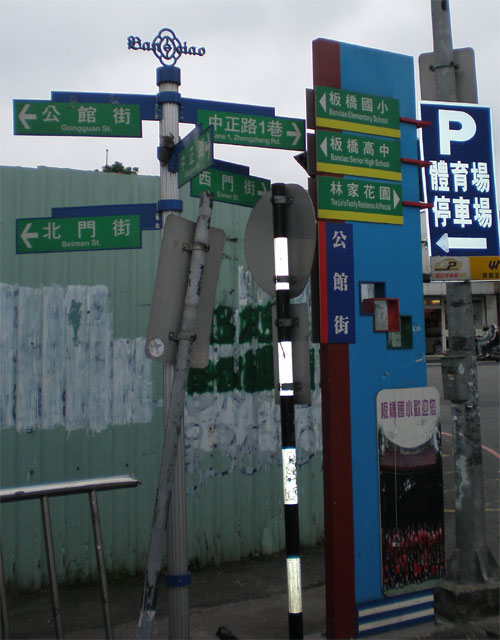
The blue-panel signage on the right represents something introduced during the term of the previous mayor, a member of the Democratic Progressive Party. And since the DPP backs Tongyong Pinyin for Mandarin, that’s the romanization system used most of the time on such signs. A number of the photos on these signs feature the previous mayor, who had relatively little recognition among the public since he had succeeded someone else’s term rather than being elected to his own. He put his photo on all sorts of things. But he failed to be elected to the city’s top spot. His challenger, the current mayor of Banqiao, spreads her name recognition by having her recycling speech broadcast from the city’s trash trucks.
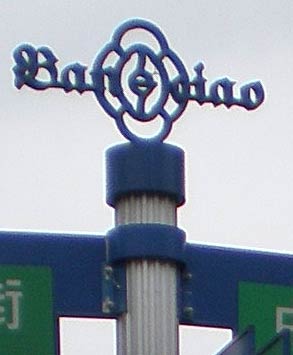 OK, now note the cap on the signpost. It reads “Ban ciao” in black letter. Although I spotted several of these today, I’d never seen any before, which would mean it’s very likely that a KMT-led city administration under a KMT-led county government is putting up new signs in Tongyong Pinyin, a romanization system the Kuomintang (Guomindang) opposes. (The KMT used to oppose Hanyu Pinyin as well, which is how Taiwan ended up with MPS2, the Tongyong Pinyin of the 1980s.) Similarly, Banqiao has relatively new signs in prominent places around the city that read (in a particularly clumsy script face) “Bravo Banciao.” (What exactly about Banqiao is worthy of such a cheer is not stated.) Even though the city administration is under the mistaken impression that it must use Tongyong (and it does suffer from this idea), that doesn’t mean it has to go around putting up new signage in this.
OK, now note the cap on the signpost. It reads “Ban ciao” in black letter. Although I spotted several of these today, I’d never seen any before, which would mean it’s very likely that a KMT-led city administration under a KMT-led county government is putting up new signs in Tongyong Pinyin, a romanization system the Kuomintang (Guomindang) opposes. (The KMT used to oppose Hanyu Pinyin as well, which is how Taiwan ended up with MPS2, the Tongyong Pinyin of the 1980s.) Similarly, Banqiao has relatively new signs in prominent places around the city that read (in a particularly clumsy script face) “Bravo Banciao.” (What exactly about Banqiao is worthy of such a cheer is not stated.) Even though the city administration is under the mistaken impression that it must use Tongyong (and it does suffer from this idea), that doesn’t mean it has to go around putting up new signage in this.
To get back to the cap, the likely story is that the transportation department had some leftover money in its budget which had to be spent lest the following year’s budget be cut; but rather than spend it on fixing errors, which would involve study and actual work, people decided to make something that the boss thinks would look cool.
I wonder, though, how many Taiwanese would even recognize this reads “Banciao” unless they had it specifically pointed out to them. A few months ago I spotted an innocent-looking teenager shopping with her mother. The girl was wearing a shirt with the following text:
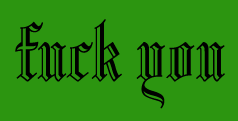
Although it’s almost certain she would know both English words and understand their meaning together, I think it extremely unlikely she knew what words were on her shirt.
OK, let’s have a closer look at the signs themselves.
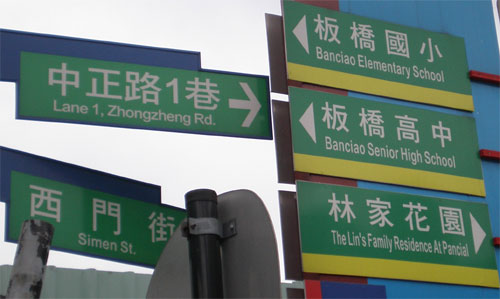
Here we have
- “Zhongzheng” (Hanyu Pinyin)
- “Simen” and “Banciao” (Tongyong Pinyin for what would be “Ximen” and “Banqiao” in Hanyu Pinyin)
- “Panchial” (bastardized Wade-Giles of “Panchiao” plus a typo, for what would be “Banqiao” in Hanyu Pinyin)
And then there’s the matter of “The Lin’s Family Residence At Panchail,” which would be much better written simply “Lin Family Residence” or by the most commonly used English name “Lin Family Gardens.”
So that’s three romanization systems, a typo, and clumsy English on official signage at just one corner — to say nothing of how relatively small the alphabetic text is. And there’s no solution in sight.

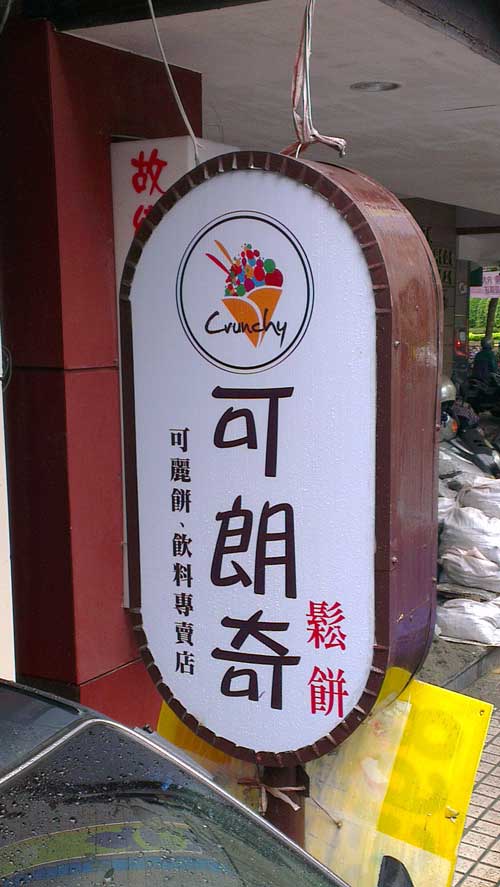

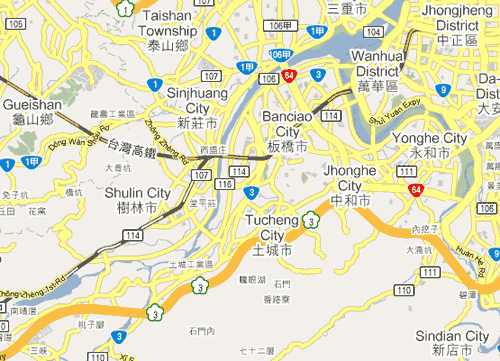
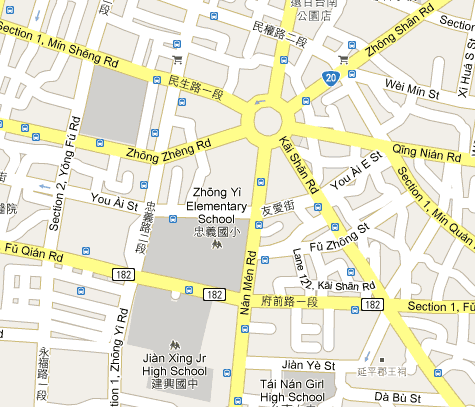
![screenshot from Google Maps of 'Cheng Dou [sic] Rd', near Taipei's Ximending](https://pinyin.info/news/news_photos/2009/11/cheng_dou_road.gif)
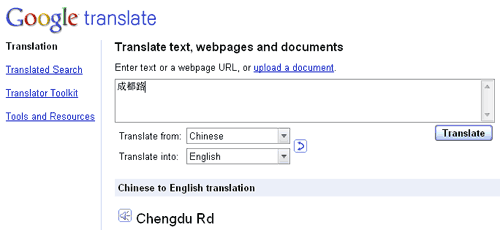
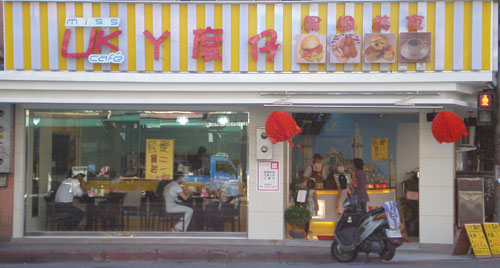
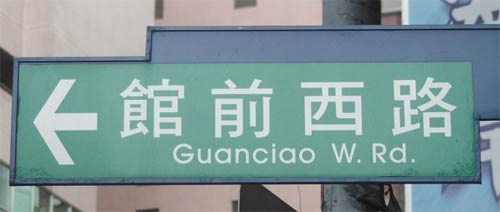
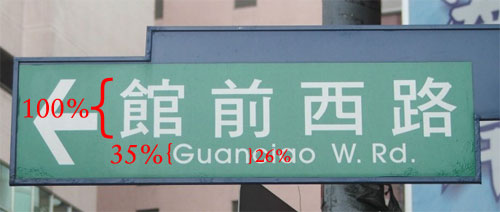

 OK, now note the cap on the signpost. It reads “Ban ciao” in
OK, now note the cap on the signpost. It reads “Ban ciao” in 


